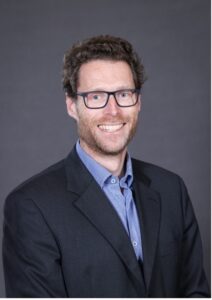Invited Speakers: Richard Sandberg and Melissa Kozul
Title: Advancing Gas Turbine Development using HPC: Challenges and Rewards
Bio Richard:

Prof. Richard D. Sandberg is Chair Professor of Computational Mechanics in the Department of Mechanical Engineering at the University of Melbourne. He also leads the program of Power Generation and Transport of the Melbourne Energy Institute.
His main interests are in (i) high-fidelity simulation of transitional and turbulent flows to gain physical understanding of flow and noise generation mechanisms, (ii) pursuing novel machine-learning approaches to help assess and improve low-order models that can be employed in an industrial context.
He received his PhD in 2004 in Aerospace Engineering at the University of Arizona and prior to joining the University of Melbourne, he was a Professor of Fluid Dynamics and Aeroacoustics in the Aerodynamics and Flight Mechanics research group at the University of Southampton and headed the UK Turbulence Consortium (www.turbulence.ac.uk), coordinating the work packages for compressible flows and flow visualisations and databases. He was awarded a veski innovation fellowship in July 2015 entitled: “Impacting Industry by enabling a step-change in simulation fidelity for flow and noise problems” and has been granted an Australian Research Council Future Fellowship for 2020-2024 to work on integrating high-fidelity simulation and machine-learning based turbulence modelling. Between 2016 and 2019 he was member of the Australian National Computational Merit Allocation Committee. He has coordinated many large-scale high-fidelity turbomachinery simulation projects, with awards from INCITE, ALCC, PRACE and NCMAS. He is an editor for Journal of Turbomachinery, Flow, Turbulence and Combustion, Theoretical and Computational Fluid Dynamics and a member of ASME’s Gas Turbine Technology Group (GTTG) leadership team.
Bio Melissa:

Dr. Melissa Kozul is a Research Fellow at the University of Melbourne. She obtained her PhD at the University of Melbourne in 2018 and was a Postdoctoral Fellow in the Thermo Fluids Research Group at NTNU, Norway for three years prior to her current appointment. Her research expertise is in the high-fidelity simulations of fundamental turbulent flows that feature critically in energy and transport technologies. To date her research interests have included wall-bounded flows, homogeneous isotropic turbulence and turbulent multiphase flows. She has extensive experience in designing and executing massively parallel simulations and collaborated with the Pawsey Supercomputing Centre in Perth, Australia as part of the Pawsey Centre for Extreme Scale Readiness (PaCER) scheme. Her most recent work focuses on high-fidelity numerical simulation of turbomachinery flows.
Abstract:
The majority of research on the gas turbines used for aircraft propulsion was historically carried out via costly laboratory tests. This approach generally yields the overall heat transfer or loss of components, rather than providing sufficient detail to dissect the range of physical phenomena impacting the performance of a design. On the other hand, Computational Fluid Dynamics (CFD) yields the full, detailed air flow-field and has become a key gas turbine design tool. Yet, industrial design cycles rely on low-order models so that performing hundreds of engine-relevant analyses is tractable. The accuracy of these models, however, is notoriously challenged by the complex flow conditions within aircraft engines, including strong pressure gradients, separated flow and laminar to turbulent transition mechanisms.
The relentless increase in computing power has enabled high-fidelity simulations of the complex flow physics in gas turbines, at engine-relevant and including operational aspects, such as component wear. Conducting such cutting-edge, massively parallel, high-fidelity CFD is a challenging task requiring significant code development efforts, planning and foresight with regards to case setup, checkpointing and critically post-processing to make best use of the latest supercomputing architectures. The reward is new physical understanding that designer can exploit to eke out more efficiency and gold-standard datasets that can be used to develop low-order models usable by industry. The new knowledge and models support the development of a cleaner and more sustainable aviation sector. In this talk, we will discuss recent code porting and optimisation efforts to maximise usage of the latest HPC systems featuring AMD GPUs and Cray compilers, and present results of new, ambitious simulations enabled by HPC systems such as Setonix and Frontier, where we leverage extreme computing power to reveal new gas turbine physics.


